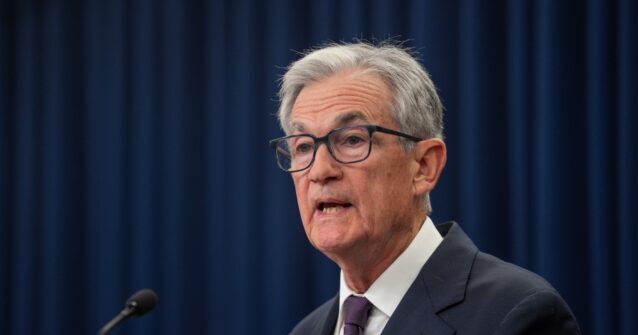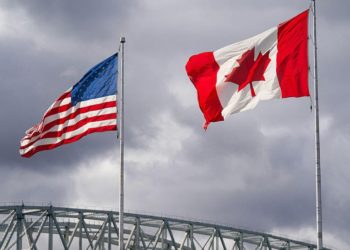The Federal Reserve reduced its interest rate benchmark by a quarter-point for a second time this year on Wednesday, bringing the short-term borrowing rate to a range of 3.75 percent to four percent.
“Available indicators suggest that economic activity has been expanding at a moderate pace. Job gains have slowed this year, and the unemployment rate has edged up but remained low through August; more recent indicators are consistent with these developments. Inflation has moved up since earlier in the year and remains somewhat elevated,” the Fed said in a statement at the conclusion of its two-day policy meeting.
The rate cut extends the central bank’s effort to support the labor market after several months of slowing job growth. The decision was widely expected by investors and comes amid a prolonged government shutdown that has delayed the release of major economic reports, leaving policymakers without timely data on employment and inflation trends.
Wednesday’s move lowers the federal funds rate to its lowest level in three years, following an earlier quarter-point reduction in September. The central bank also voted to end the runoff of Treasury securities from its $6.6 trillion balance sheet, halting the process of shrinking its holdings of government debt.
Fed officials face uncertainty about how much further to reduce rates as they balance risks to both sides of their dual mandate. Some policymakers have argued that inflation, which has hovered near three percent, remains too high to justify additional cuts, while others see evidence that the economy is losing momentum and may require more support.
“When you are driving in the fog, you slow down,” Powell said at a press conference following the Fed meeting,
Powell argued that inflation, when stripping out the effects of tariffs, is close to the Fed’s two percent target. He added that while tariffs have raised prices in his view, the effect is likely to be short-lived, with the path of inflation returning to path to two percent once tariff costs are fully priced in.
The lack of official data has intensified those divisions. With key indicators on hiring, spending, and prices unavailable, officials relied on limited private surveys and earlier trends to assess the economy’s trajectory.
“There were strongly differing views today, and the takeaway from that is that we haven’t made a decision about December, and we’re going to be looking at the data that we have, how that affects the outlook and the balance of risks,” Powell said.
Investors are now focused on the Fed’s next meeting in December, where policymakers will decide whether to continue easing or pause to evaluate the impact of recent reductions. The outcome is likely to depend on whether government data are restored in time to provide a clearer picture of the economy’s health.
The Fed’s decision was not unanimous. Kansas City Fed president Jeffrey Schmid voted against cutting the rate. Fed Governor Stephen Miran also voted against the cut, saying he preferred a larger, half-point cut. This is the third consecutive Fed meeting in which the Federal Open Market Committee, which sets the benchmark rate, was divided about its decision. The ten other voting members of the FOMC cast their ballots in favor of the quarter-point cut.
The federal funds rate is the overnight interest rate banks charge each other for reserve balances. Reserves are deposits held at the Federal Reserve that banks use to settle payments between one another. U.S. banks are no longer major borrowers in the fed funds market because the Fed now operates under an “abundant reserves” regime, meaning most institutions hold more reserves than they need. The main borrowers today are U.S. branches of foreign banks, which typically have smaller domestic deposit bases. Reserve requirements for U.S. banks were eliminated in March 2020.
The Fed pays banks interest on their reserves. In connection with Wednesday’s rate cut, the Fed lowered the interest rate it pays on reserve balances to 3.90 percent. This rate has become the primary tool for influencing short-term funding costs and, by extension, borrowing rates across the economy.
The post Fed Cuts Rates By A Quarter Point appeared first on Breitbart.




